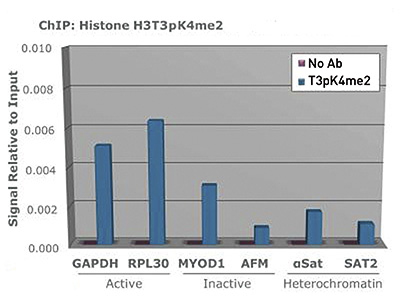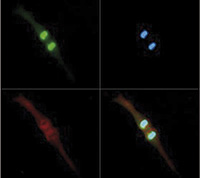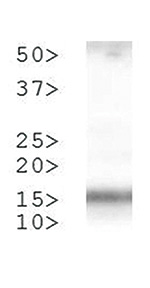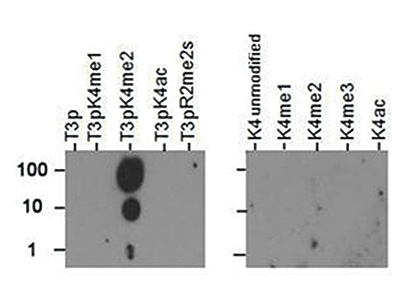Chromatin is the arrangement of DNA and proteins in which chromosomes are formed. Correspondingly, chromatin is formed from nucleosomes, which are comprised of a set of four histone proteins (H2A, H2B, H3, H4) wrapped with DNA. Chromatin is a very dynamic structure in which numerous post-translational modifications work together to activate or repress the availability of DNA to be copied, transcribed, or repaired. These marks decide which DNA will be open and commonly active (euchromatin) or tightly wound to prevent access and activation (heterochromatin). Common histone modifications include methylation of lysine and arginine, acetylation of lysine, phosphorylation of threonine and serine, and sumoylation, biotinylation, and ubiquitylation of lysine. Specifically, the dimethylation of H3 lysine 4 (H3 K4Me2) and phosphorylation of threonine 3 (H3T3p) are known marks of transcriptional activation and mitosis, respectively. While H3K4 has many known modifying enzymes (Set1, Set7/9, MLL, ASH1), Haspin is the only known modifier for H3T3. Recent findings also demonstrate that T3p can promote binding of survivin in the nucleosome.





